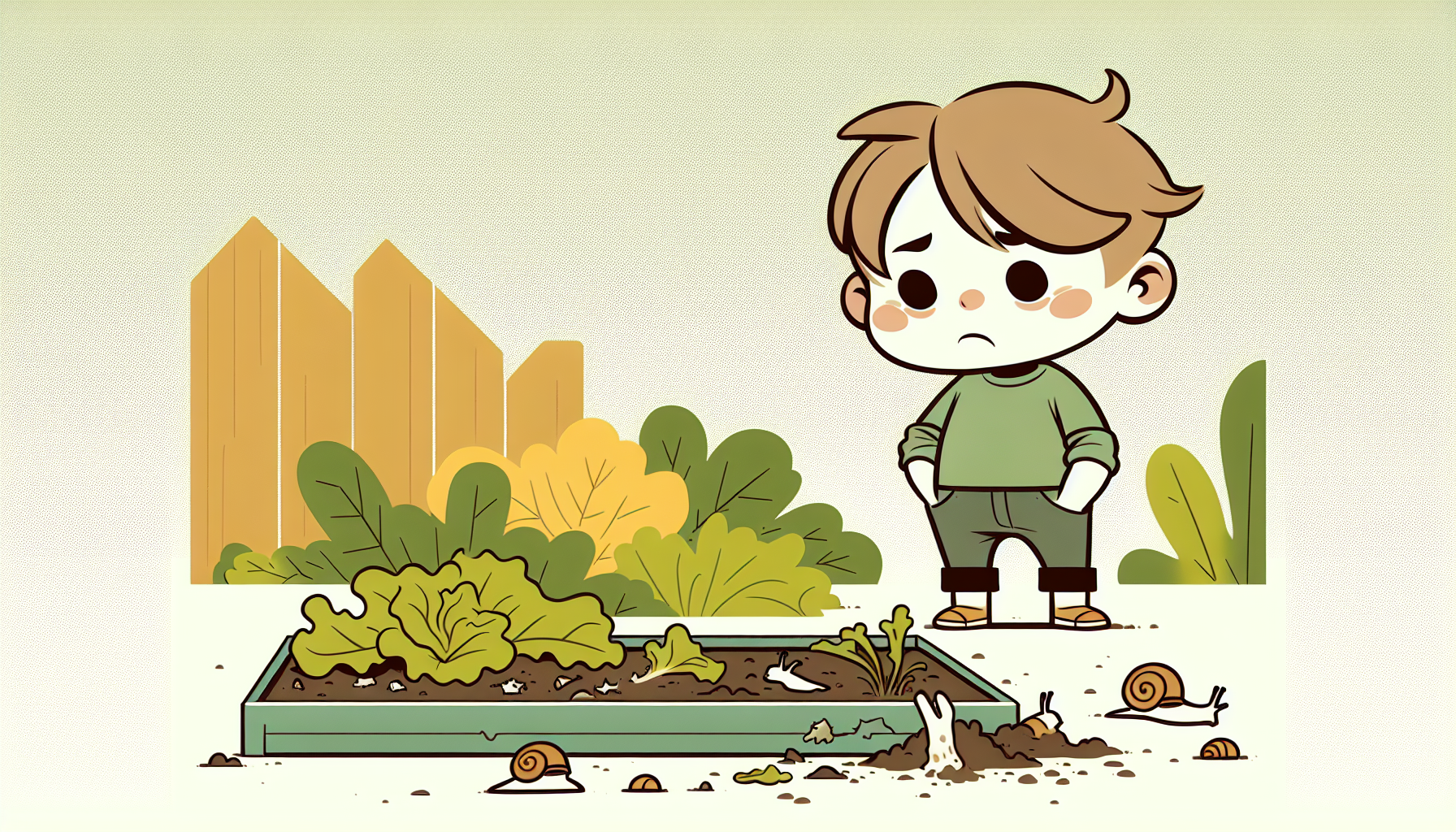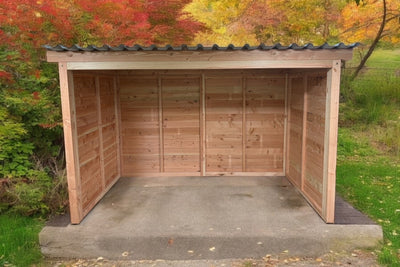Fighting snails without poison: natural solutions for Swiss gardens
Snails are uninvited guests in many Swiss gardens - and families in particular want solutions that protect plants and are also childproof. If you want to combat snails without poison, you can benefit from a system of barriers, appropriate watering, collection and clever planting. In this guide, you will find tried-and-tested methods for Swiss conditions, including tips on raised beds, material recommendations and seasonal planning. We show you which methods work in damp spring and after storms, how to avoid typical mistakes and where you can obtain suitable materials in Switzerland. How to achieve effective, natural slug protection - even around play areas and family beds.
Why are slugs a problem for my garden?

If you want to combat slugs without poison, you should know the cause of the problem: In Switzerland, the Spanish snail in particular causes a lot of damage during wet periods. It prefers to eat young seedlings, lettuce, basil and hostas and multiplies quickly, especially after warm rainfall.
Snail damage not only destroys harvests, but also costs time and nerves because beds have to be replanted and young plants protected. The occurrence is difficult to calculate: The pressure rises sharply after wet nights, which affects hobby gardeners in the Swiss Plateau, Ticino and at higher altitudes in equal measure.
For family gardens, safety is just as important as yield - chemical agents are therefore often not an option. The aim is a robust, poison-free system that reduces slugs in the long term and can be integrated into everyday life.
What natural defense methods are there against slugs and snails?
Physical methods (e.g. barriers, traps)
Barriers around the bed are particularly effective for controlling snails without using poison. Snail traps or fences with angled edges, copper tape on raised beds and snail collars that fit snails perfectly prevent them from climbing over. Copper minimally irritates the slug slime, has a deterrent effect and is durable - ideal for raised beds and vegetable patches.
Natural obstacles such as coarse sawdust, eggshells or sharp-edged lava granules make it difficult for slugs to cross. Strips need to be renewed after rain, which is why they are well suited as an additional protective ring. Watering in the morning keeps the area drier and reduces activity in the bed.
Beer traps are unsuitable for family gardens as the smell attracts additional animals and can exacerbate the problem. Specialist agencies advise against this; instead, use collection points with boards or piles of leaves that you check and empty regularly (Pro Natura: Snails without poison).
Empty shelters - shady, moist shelters such as boards or upturned pots - concentrate snails in one place. This allows you to collect them efficiently in the early morning and remove them from sensitive areas.
Companion plants and natural enemies
Here, too, the following applies: controlling snails without poison works better with clever planting. Plants such as ferns, sage, rosemary and thyme are less attractive, nasturtiums are a distraction and marigolds can serve as a living shelter belt. Place sensitive crops such as lettuce in the protected center.
Encourage natural predators with near-natural structures. Hedgehogs, toads, ground beetles and birds can find shelter in piles of branches or leaves, small watering holes and hedges. In large gardens, runner ducks can be introduced periodically; clearly separate beds and play areas to avoid soiling.
Nematodes (Phasmarhabditis hermaphrodita) can be used as a biological supplement against slugs living in the soil. They are approved in Switzerland; note the conditions of use and target species, as slugs are usually not detected above ground (BLV: Overview of active substances).
How can I ensure the safety of my children in the garden?
If you control slugs without poison, you minimize risks for children, pets and beneficial insects. Non-toxic barriers such as lava granules, sawdust or mulch strips are non-toxic and can be used around play areas as long as no small parts can be swallowed.
Metal barriers such as copper strip or sheet metal are childproof if the edges are deburred and fixed. Mount the edges about 10 cm high and anchor them firmly to the ground so that there are no gaps and no risk of injury.
Create collection zones away from common areas and explain to children how to deal with snails in the garden. Collecting them together in the morning teaches mindfulness, promotes knowledge of nature and keeps beds clean.
Which materials are ideal for implementing defense measures?
Sustainable and child-friendly materials
Robust, natural materials are ideal for permanent slug control without poison. We recommend lava granules or rock flour as a slippery barrier, copper tape or sheet metal for raised beds, wooden strips to reinforce edges and untreated boards for controlled hiding places.
Avoid sharp-edged or chemically treated materials in the kitchen garden. Pressure-impregnated wood can release harmful substances into the soil. For DIY projects with children, natural materials are more suitable and easy to handle.
Availability of materials in Switzerland
If you want to combat snails without poison, you can find suitable materials in regional shops. Sources of supply include:
- Do it + Garden (Migros)
- Coop Bau+Hobby
- OBI Switzerland
- Andermatt Biogarten (Online)
For copper tape, slug collars or lava granules, it is worth looking in stores with a focus on organic gardening. Regional garden centers advise on the installation of raised beds and child-safe solutions.
Typical guide prices: Copper edging per meter around CHF 4-6, 25-litre lava granules around CHF 15-25. For larger areas, combined solutions consisting of barriers and clearly demarcated beds offer impressive value for money.
How do I plan effective slug protection in the garden?
Space requirements and garden layout
To combat slugs and snails sustainably without poison, first analyze hotspots such as lettuce and seedling beds. Raised beds, clear edging stones and raised beds make it easier to install copper strips and slug trays and help to prevent slugs in raised beds.
A surrounding "slug moat" made of lava granules or sawdust stops animals from entering. Combine copper on raised beds, mineral barrier strips and collection hiding places outside the main zones to create graduated protection.
Anyone planning to build a raised bed in Switzerland will benefit from integrated barriers right from the start. Make sure there are few contact bridges, such as climbing shoots or mulch in contact with the ground, which snails could use as an entry point.
Implementing the measures for the best results
Controlling slugs without poison requires routine. Check barriers weekly, clean copper with a little vinegar water and renew litter material after rain. Water at the root in the morning, not over a large area.
Collecting works best in the early morning or in the evening after warm showers. A joint tour with children increases the success rate and makes garden maintenance a regular family activity.
Tests in Switzerland show that protective hoods, collars and dry litter material perform particularly well depending on the weather. Microclimate and season influence effectiveness - combine methods and remain flexible (SRF Kassensturz: What helps?).
How do I avoid common mistakes in slug and snail control?
Realistically estimate costs
Even if you fight slugs without using poison, there is an initial investment. A complete copper border for a medium-sized bed can cost CHF 70-100, and mineral strips have to be added after rain.
Plan in stages: start in the most vulnerable areas and expand as necessary. Use inexpensive temporary solutions such as wooden hiding places or coffee grounds as a short-term barrier until the permanent barrier is in place.
In the long term, stable systems with raised beds, copper edging and clear maintenance procedures pay off. Less plant loss and less effort compensate for the start-up costs.
Long-term care and adaptation of strategies
Slug control without poison only remains effective if you make adjustments. Renew mulching rings, clean copper surfaces, check hiding places and control potential bridges through hanging leaves or mulch.
Adapt strategies to the weather and season. In spring and after summer storms, the pressure is higher; in late fall, shallow loosening of beds helps to prevent eggs from being damaged during cold periods. Municipal advice centers recommend combining several methods and watering in the morning (Lucerne Environmental Advisory Service).
Make it a point to check the garden calendar every two weeks or so. This will allow you to recognize new invasion lines early and keep your system stable.
Conclusion: Naturally and safely against slugs - with a system
A systematic approach to slug control without poison protects seedlings and crops and creates a safe family garden. Combine barriers, collection, adapted irrigation, companion plants and near-natural habitats - suitable for the climate and location in Switzerland.
Start small, test what works for you and keep at it. Your system will become more stable with every season - start your garden project now and gradually achieve more harvest and more relaxed gardening.


